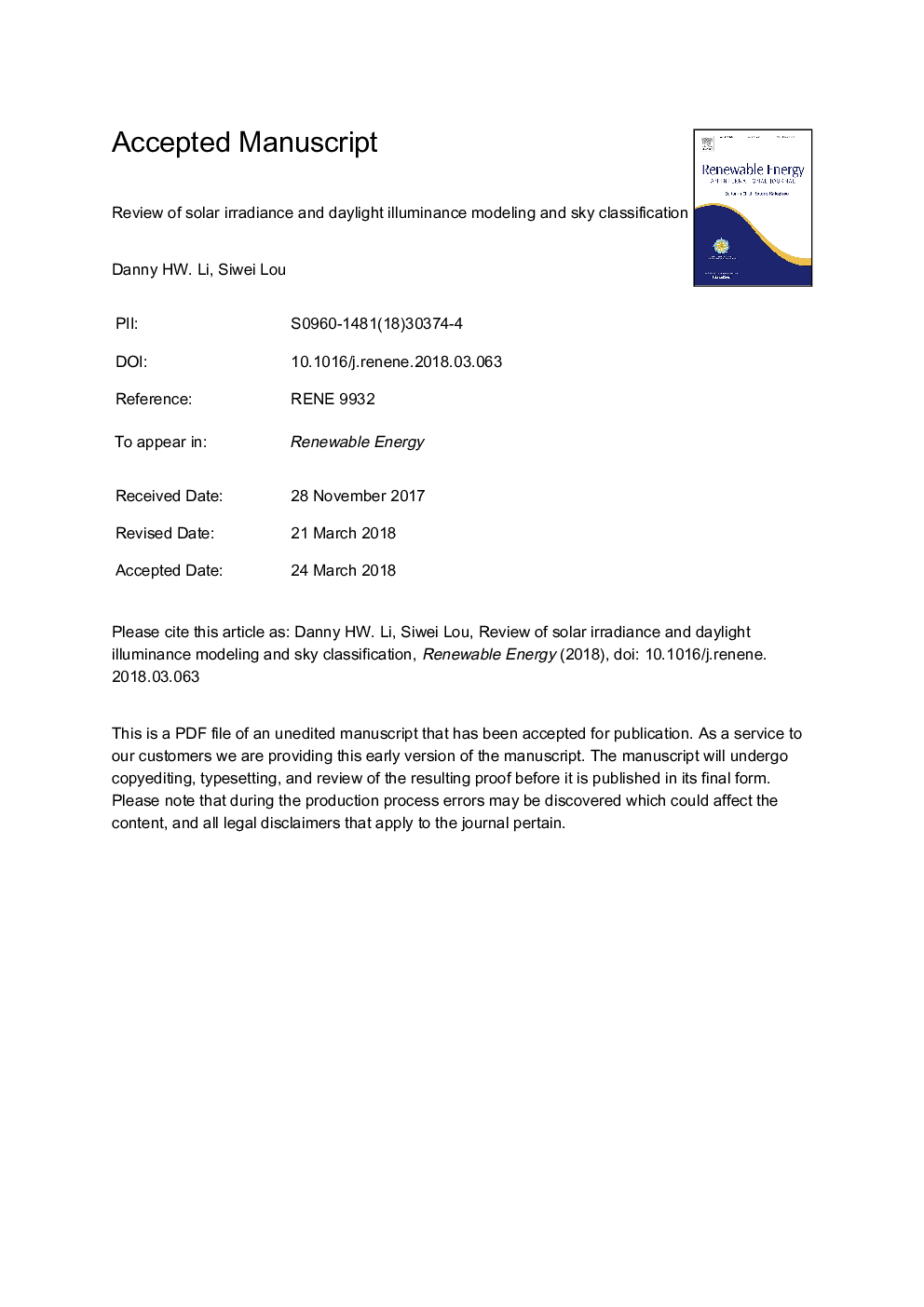| Article ID | Journal | Published Year | Pages | File Type |
|---|---|---|---|---|
| 6764209 | Renewable Energy | 2018 | 35 Pages |
Abstract
In many parts of the world, the solar radiation and daylight illuminance data taken from surfaces of interest are not always readily available. Without direct measurement, the data can be predicted from empirical models based on geographical variations and meteorological parameters. Recently, the International Commission on Illumination (CIE) has adopted a list of 15 standard skies. Each standard sky represents a unique, well-defined sky radiance and luminance pattern expressed by mathematical equations that can use to compute solar irradiance and daylight illuminance on inclined surfaces and variously oriented vertical planes. An issue is whether the sky conditions can be correctly categorized. This paper reviews the solar radiation and daylight illuminance model developments and sky classification methods. The findings indicated that Machine Learning techniques have been effectively used for predicting solar radiation and daylight illuminance and classifying the standard skies. Such approaches could be globally adopted and useful to compute the required climatic data for renewable and sustainable developments and energy-efficient building designs.
Related Topics
Physical Sciences and Engineering
Energy
Renewable Energy, Sustainability and the Environment
Authors
Danny H.W. (æè¡æ¨º), Siwei (å¨é©·æ¸),
